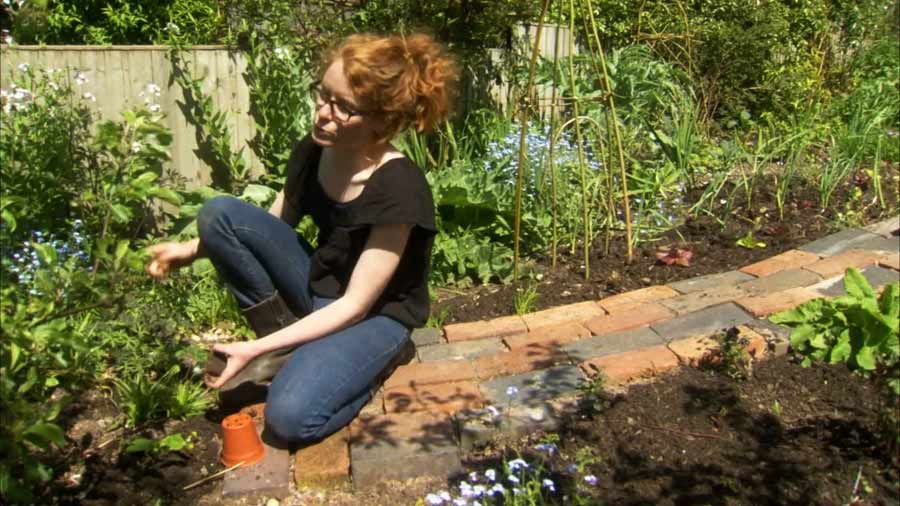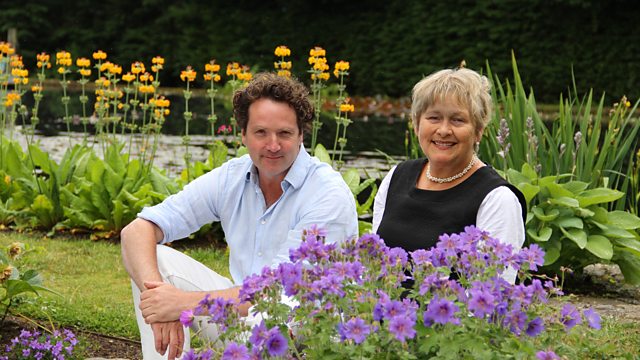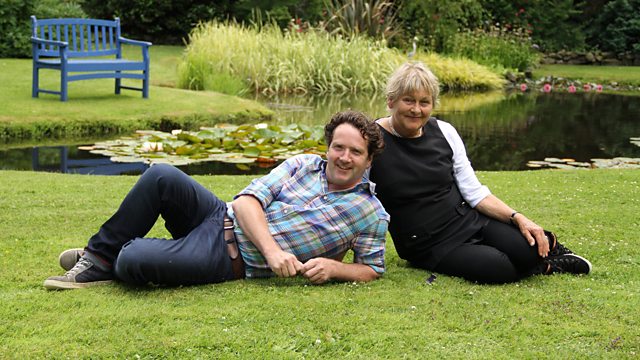The Edible Garden episode 4 – Juicy Fruits: Alys Fowler attempts to avoid shop-bought fruit and vegetables and live off her own, home-grown produce, all from her tiny terraced back garden. It’s no easy task because Alys doesn’t want to turn her garden into an allotment, so she’s growing her fruit and vegetables among her flowers.
Alys will focus on different foods and show how anyone can grow, cook and eat from their own garden – even if they live in a city.
Fruit, particularly fruit like raspberries and blueberries, can be a costly luxury bought from the shops, yet nothing could be simpler to grow. You plant them and then just sit back and wait. With most of her garden devoted to growing vegetables, Alys still manages to squeeze in some juicy fruits alongside her mature apple tree. As well as enjoying them for breakfast, Alys preserves their flavour by making jams, tangy fruit leathers and sweet dried apple rings.
The Edible Garden episode 4 – Juicy Fruits
How to grow raspberries
Raspberries are popular garden fruits that are easy to grow. Try growing both summer and autumn-fruiting varieties: just a few plants will reward you with plenty of fruit from midsummer until mid autumn. If you end up with a glut, raspberries also freeze well, and make wonderful jams, sauces and cooked desserts.
Raspberries thrive in moisture-retentive, fertile, slightly acidic soils, which are well-drained and weed free. They dislike soggy soils and shallow chalky soils. For best results, plant in a sunny position (although they will tolerate part shade). Ideally, site your rows running north to south, so that they do not shade each other.
Raspberry flowers are self-fertile and pollinated by insects, so avoid a very windy site. Also, the fruiting side branches of some cultivars are very long and may break in the wind.
How to grow blueberries
Not only are blueberries productive, their glorious autumn colours provide ornamental appeal. The fruit is delicious and high in antioxidants. Shrubs can be grown in the garden border or as attractive container plants.
Blueberries are relatively easy to look after. Keep the compost or soil moist, but not soaking wet. Don’t allow it to dry out between waterings. Water plants with rainwater, not tap water, unless you have no alternative in a drought. Tap water will raise the pH level and blueberries like acidic conditions.
Ensure the soil stays at pH of 5.5 or lower, to avoid problems. Check the pH of the soil in spring and add sulphur chips if it needs lowering. This shouldn’t be necessary with container-grown plants provided ericaceous fertiliser and rainwater are used. Feed container plants every month using a liquid fertiliser formulated for ericaceous (lime-hating) plants, following the manufacturer’s recommendations.




